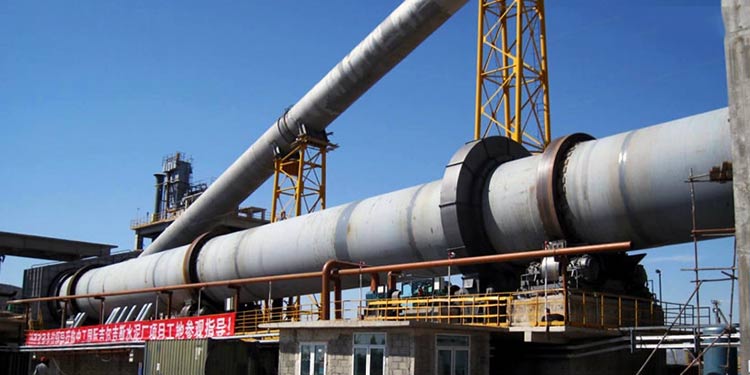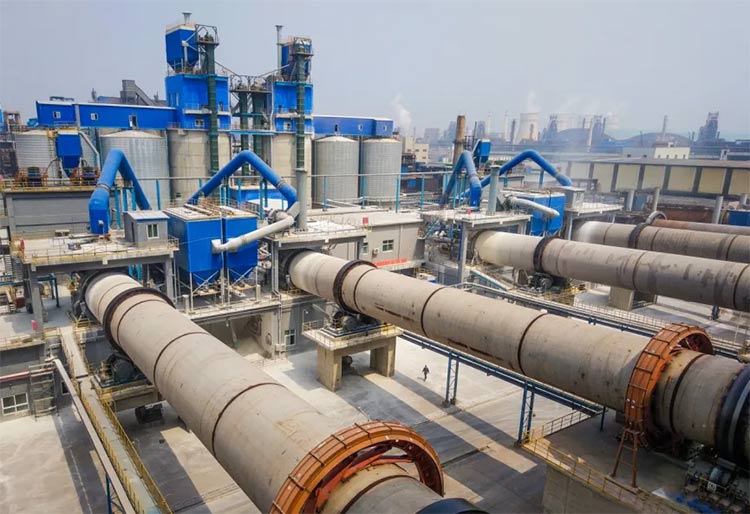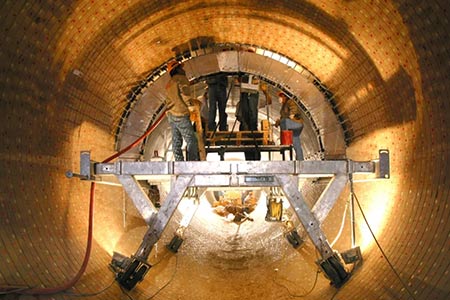Lime Rotary Kiln Install in Cement Plant

Lime rotary kilns have a variety of functions and excellent quality. Therefore, for nearly half a century it has been solely responsible for clinker calcination in cement plant. However, there are also two major shortcomings and deficiencies in the lime rotary kiln, one is that as a heat exchange device, the heat exchange between hot air flow and material in the kiln is mainly "accumulation state", and the low heat exchange efficiency affects the full play of its production efficiency and the reduction of energy consumption; The other is that the fuel required in the clinker calcination process is all supplied from the kiln hot end, the fuel is burned under high temperature and oxygen-rich conditions in the calcination belt in the rotary kiln, and harmful components such as NOx are formed in large quantities, and slow cooling also affects the quality of clinker. Therefore, the technological innovation since the birth of the lime rotary kiln is centered on overcoming and improving its shortcomings,so that it can take advantage of the strengths and avoiding the shortcomings and continuously improving the production efficiency.
Lime Rotary Kiln Install Layout Requirements:
Lime rotary kiln height should be determined according to the clinker cooler type and layout.

The layout of the lime rotary kiln foundation pier shall comply with the following regulations:
- The lime rotary kiln installation size should be based on the cold kiln;
- The horizontal distance between the foundation piers should be determined according to the size after thermal expansion;
- The calculation of axial thermal expansion of the kiln cylinder body should be based on the wheel belt center, with a retaining wheel located near the transmission device as the reference point and expand to both ends;
- The inclination of the base surface should be equal to the kiln barrel inclination, and foundation hole angle should be perpendicular to the base surface.
- Meet the layout requirements of kiln head and kiln tail equipment;
- To facilitate the operation and maintenance of equipment;
- Combined with the reasonable location of the central control room
Lime Rotary Kilin Types
Lime rotary kilns can be divided into cement kilns, metallurgical chemical kilns and lime kilns according its processing raw materials treated. According to the drying method are wet rotary kiln and dry rotary kiln, the following focus is on dry and wet two types of lime rotary kiln.

Wet Method Rotary Kilns:
The cement kiln used in wet production is called wet kiln, and wet production is to make raw material into a slurry with a moisture content of 32% to 40%. Since the preparation of a mud with fluidity, the raw materials are well mixed and it's composition is uniform, so that customer can geth high quality treated clinker, which is the main advantage of wet production.
Dry Method Rotary Kilns:
The advantages and disadvantages of dry rotary kilns are just the opposite when compared with wet rotary kilns .Dry method means makes raw material into dry powder, and as moisture is generally controlled less than 1%, so it reduces the heat required to evaporate the water than the wet method. Due to the high exhaust gas temperature, the heat consumption of the hollow kiln is not low. Dry production has poorer fluidity than mud. Therefore, the raw materials are not mixed well, and the composition is uneven.

